Japanese Food Guide: 25 Must-Try Dishes
If there’s one thing I love about Japan, it’s the food. Whether it’s slurping up a hot bowl of ramen in a tiny shop, grabbing a crispy piece of tempura at a market stall, or watching a chef carefully press sushi right in front of you, Japanese food has a way of making every meal feel special.
And the best part? There’s something for everyone. Some dishes are delicate and refined; others are rich and comforting. Some are best enjoyed at a fancy restaurant, others straight from a convenience store. But no matter what, every bite is full of flavor, tradition, and care.
So, if you’re heading to Japan (or just dreaming about it), here are 25 must-try Japanese dishes that will make you fall in love with the food culture. From crispy tonkatsu to melt-in-your-mouth sushi, these are the meals that you can’t leave Japan without trying.
1. Sushi (寿司)
Sushi is probably the most famous Japanese food to try in Japan.
It’s everywhere. High-end sushi counters, casual conveyor belt spots, and even convenience stores sell it. No matter your budget, there’s always a good place to eat sushi in Japan.
If you’re looking for something affordable, check out places like Sushiro or Kura Sushi. Plates start at just 100 yen.
But if you want the freshest sushi, head to Tokyo’s famous fish market. The seafood there comes straight from the ocean to your plate. One bite, and you’ll taste the difference.
Read more: How to travel on a budget to Japan.

2. Unagi (うなぎ)
If you’ve never tried unagi, you’re in for something special.
This Japanese grilled eel is smoky, tender, and glazed with a sweet soy-based sauce that caramelizes over the fire. The result? A rich, slightly sweet, deeply umami flavor that melts in your mouth.
Unagi is often served over rice as unadon, making it one of the most satisfying meals in Japan. It’s also considered a power food, especially in summer.
People believe it gives you extra energy to fight off the heat. I don’t know if that’s true, but I do know that a perfectly grilled unagi bowl feels like comfort on a plate.
Some of the best unagi restaurants have been perfecting their recipes for generations. If you get the chance, find a place that still uses traditional charcoal grilling. You’ll taste the difference.
3. Oden (おでん)
Oden is one of those Japanese winter dishes that feels like a warm hug. It’s a mix of ingredients like daikon radish, fish cakes, tofu, and boiled eggs, all simmered in a light soy-based broth for hours. The longer it cooks, the better it tastes.
You’ll find oden at traditional restaurants, convenience stores, and food stalls in Japan when the weather turns cold. The broth is delicate but full of deep, comforting flavors. Each bite is soft, juicy, and infused with warmth.
Start with the daikon. It soaks up all the broth and turns incredibly tender. Pair it with a skewer of fish cake or a perfectly marinated egg. Simple, satisfying, and exactly what you need on a chilly day.
4. Tonkatsu (豚カツ)
Tonkatsu is one of those dishes that’s simple but unforgettable. It’s Japanese deep-fried pork cutlet, golden and crispy on the outside, juicy and tender inside.
The secret? Panko breadcrumbs. They create a light, airy crunch that’s completely different from other fried foods.
It’s usually served with a mountain of shredded cabbage and a thick, tangy tonkatsu sauce that’s slightly sweet, a little smoky, and totally addictive.
Some restaurants let you grind your own sesame seeds to mix into the sauce, which makes the experience even better.
If you’re in Tokyo, Ginza is famous for some of the best tonkatsu spots in Japan. Order a set meal with rice and miso soup, and you’ve got one of the most satisfying meals ever.
5. Katsudon (カツ丼)
If tonkatsu is all about crunch, katsudon is all about comfort. It’s the same deep-fried pork cutlet, but this time, it’s simmered in a savory-sweet broth with onions and egg, then placed over a steaming bowl of rice.
The crispy coating soaks up the sauce, making every bite soft, rich, and ridiculously good. The egg is slightly runny, the onions are sweet and tender, and everything melts together perfectly. It’s the kind of food that warms you up from the inside.
There’s also a fun little superstition about katsudon. Since “katsu” sounds like the word for “win” in Japanese, students often eat it before big exams for good luck. Whether or not it brings you luck, it definitely brings you comfort.
6. Shabu-Shabu (しゃぶしゃぶ)
Shabu-shabu is more than just food. It’s an experience. You sit around a steaming pot, swirling thin slices of meat and fresh vegetables in a bubbling broth.
The name “shabu-shabu” comes from the sound the meat makes as you swish it through the water.
After a few seconds, the meat is perfectly cooked. Dip it into ponzu sauce for a citrusy kick, or try the creamy sesame sauce for something richer. The contrast of flavors is what makes this dish so special.
And just when you think you’re done, the final step makes it even better. The leftover broth, now rich with flavors from the meat and vegetables, is used to cook noodles or rice. It turns into a completely new dish, warm and comforting until the very last bite.
7. Yakitori (焼き鳥)
Yakitori is Japanese grilled chicken on skewers, cooked over a charcoal grill. It’s smoky, juicy, and full of flavor.
There’s a skewer for every part of the chicken—thighs, wings, breast, skin, even heart and liver.
Some places serve them with just salt, but the best ones brush on a rich tare sauce made of soy sauce, mirin, and sugar. It’s sweet, salty, and slightly caramelized from the grill.
Yakitori is a must-try at Japanese izakayas (pubs). There’s nothing better than sitting at the counter, watching the chef flip skewers over the flames, and pairing it with an ice-cold beer.
If you’re looking for where to eat yakitori in Tokyo, head to Omoide Yokocho or Yakitori Alley in Shinjuku. The atmosphere is amazing.

8. Ramen (ラーメン)
Every region in Japan has its own ramen style, and each one is worth trying.
The noodles? Made from wheat flour, water, salt, and kansui (alkaline water). Some are thin and curly. Others are thick and chewy.
The broth is where the real magic happens. The best ramen flavors in Japan include shio (salt), shoyu (soy sauce), miso (fermented soybean paste), and tonkatsu (pork bone broth). Each has its own deep, satisfying flavor.
Ramen shops can be tiny, with just a few stools at the counter. Some don’t even take orders at the table—you buy a ticket from a vending machine first.
If you’re a ramen lover, you should visit the Aqua City Odaiba, the ramen theme park in Odaiba. So many flavors in one place. It’s heaven.

9. Takoyaki (たこ焼き)
Takoyaki is one of my favorite Japanese street foods. These little octopus-filled balls are crispy on the outside, soft and gooey on the inside.
They start as a simple batter, poured into special round molds. Inside goes a small piece of octopus, green onions, and tempura bits for extra crunch.
Once they’re golden brown, they get topped with takoyaki sauce (kind of like a sweet-savory Worcestershire), mayo, bonito flakes, and seaweed powder.
You’ll find takoyaki at food stalls, festivals, and street markets all over Japan. But if you want the best takoyaki in Japan, Osaka is the place to go. That’s where takoyaki was invented, and they take it seriously!
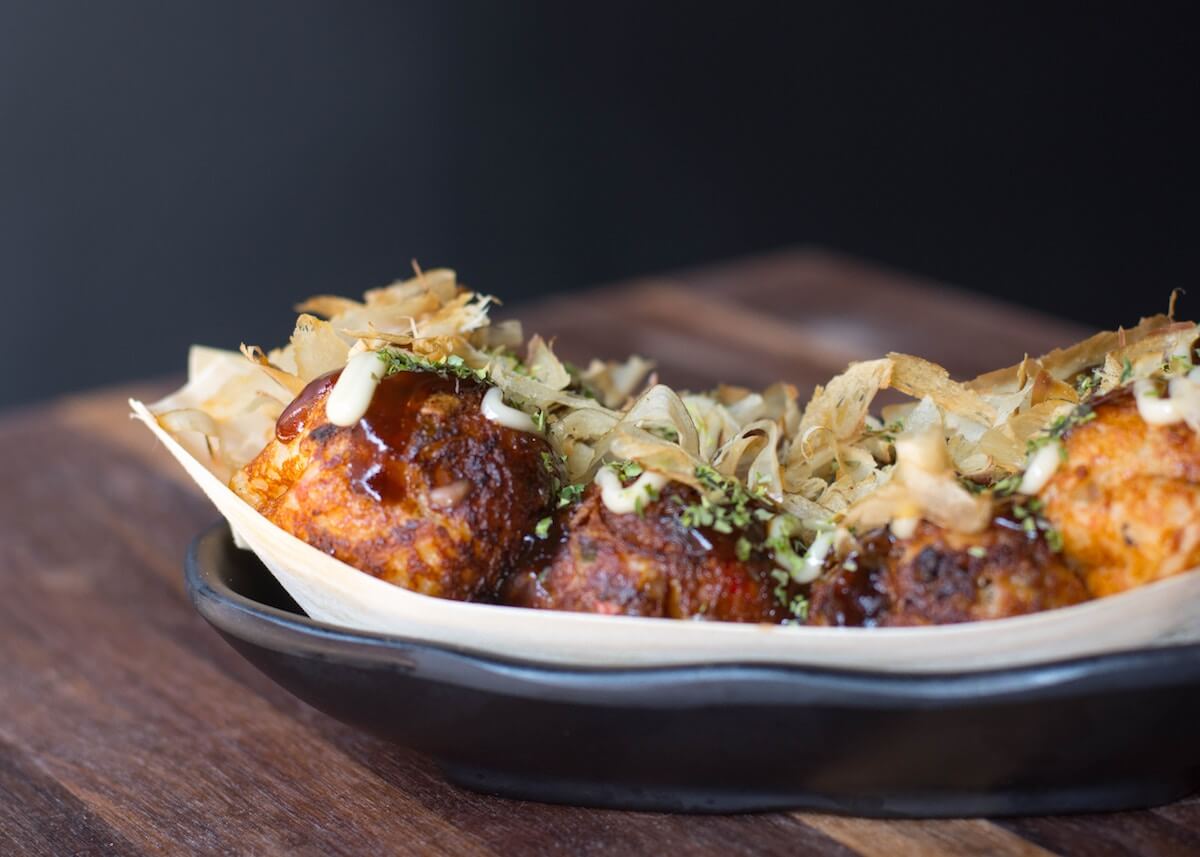
10. Okonomiyaki (お好み焼き)
Okonomiyaki is often called Japanese savory pancakes, but honestly, that doesn’t do it justice. It’s more like a cross between a pancake, an omelet, and a pizza.
The batter is made of flour, eggs, and shredded cabbage, but from there, you can customize it however you want. Some people add pork belly, shrimp, squid, or even cheese.
It gets cooked on a griddle, then topped with okonomiyaki sauce, Japanese mayo, dried seaweed, and bonito flakes that “dance” from the heat.
There are two main styles: Osaka-style (where everything is mixed together) and Hiroshima-style (where ingredients are layered). Both are incredible.

11. Udon (うどん)
Thick, chewy, and satisfying. That’s udon. It’s one of Japan’s most comforting noodle dishes.
Cold udon is light and refreshing. The noodles are chilled and served with a simple dipping sauce. If you visit Japan in the summer, this is one of the best Japanese foods to cool down.
Kake udon is the most basic kind. Just udon noodles in a warm dashi broth, topped with sliced green onions. You can add tempura, a raw egg, or even thinly sliced beef if you want something more filling.
And then there’s yaki udon. Stir-fried udon with vegetables, soy sauce, and meat or seafood. Rich, savory, and packed with umami.
If you’ve never had fresh, handmade udon before, find a place that makes it. The texture is incredible.
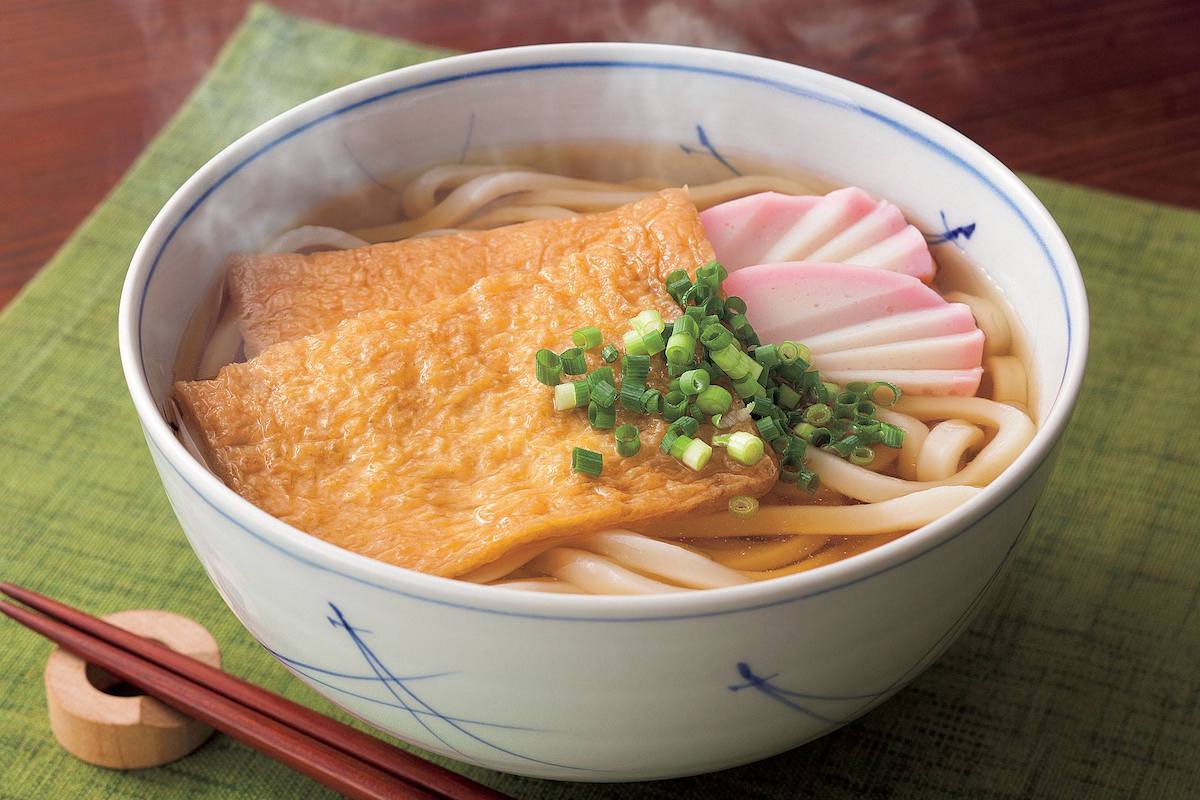
12. Soba (そば)
Soba noodles have a slightly nutty flavor from the buckwheat. They’re thinner than udon, but don’t let that fool you. They’re just as satisfying.
You can eat them hot in broth, but I love cold soba, especially in summer. The noodles come chilled on a bamboo tray with a dipping sauce on the side. You dip, slurp, and enjoy. It’s simple but somehow perfect.
If you want something more filling, try yakisoba. It’s stir-fried soba with cabbage, pork, and a thick, tangy sauce. You’ll find it at Japanese street food stalls and casual diners all over Japan. It’s one of those dishes that’s easy to love.
Soba noodles come in different colors too. Some are gray. Some are yellow. Others have a greenish tint, especially when made with matcha. No matter which one you try, they’re all worth it.

13. Tempura (天ぷら)
Tempura is light, crispy, and completely addictive. It’s one of the most famous deep-fried foods in Japan, but somehow it never feels greasy.
It can be anything – shrimp, fish, sweet potatoes, eggplant. The secret is in the batter. It’s super light, just flour, egg, and cold water, which makes the tempura crispy without being heavy.
You’ll often see tempura served with rice bowls (tendon), udon noodles, or just on its own with a dipping sauce.
If you’re looking for a really special experience, some restaurants specialize in high-end tempura dining, where each piece is fried fresh and served to you one by one.

14. Gyoza (餃子)
Gyoza are Japanese dumplings, and I could eat them every day. They have a thin, crispy wrapper with juicy meat and veggie filling inside—usually a mix of ground pork, cabbage, garlic, and ginger.
There are different ways to eat gyoza. Yaki-gyoza (pan-fried) is the most popular. The bottom is golden and crispy, while the top stays soft and juicy. Sui-gyoza (boiled) and Age-gyoza (deep-fried) are also worth trying.
Gyoza is a common side dish with ramen, but there are also specialty gyoza restaurants where you can order a whole plate.
If you’re looking for the best gyoza in Japan, Utsunomiya is famous for it. They even have a gyoza festival!

15. Karaage (からあげ)
Karaage is Japan’s answer to fried chicken. And honestly? It might be even better.
Unlike regular fried chicken, Japanese karaage is first marinated in soy sauce, garlic, and ginger. Then, it’s coated in potato starch instead of flour, which makes it extra crispy. The outside is crunchy, the inside is juicy, and the flavor is unreal.
You can find Karaage everywhere, from izakayas to convenience stores. Some shops specialize in it, serving up different flavors like spicy, yuzu citrus, or even matcha salt.

16. Yakiniku (焼肉)
Yakiniku literally means “grilled meat,” and it’s one of the best Japanese barbecue experiences you can have.
At a yakiniku restaurant, you get raw, thinly sliced beef, pork, or chicken, and you grill it yourself at the table.
The meat is unbelievably fresh, and the best part is controlling how it’s cooked. Some places serve high-quality Wagyu beef, which just melts in your mouth.
Many yakiniku spots offer all-you-can-eat Japanese BBQ, where you pay for a set amount of time (like 60 or 90 minutes) and eat as much as you want. It’s the perfect meal for meat lovers, and it’s even better in the winter when you want something warm and satisfying.

17. Sukiyaki (すき焼き)
Sukiyaki is a Japanese hot pot dish, and it’s perfect for cold weather. It’s cooked in a shallow iron pot, with thinly sliced beef, tofu, mushrooms, cabbage, and noodles simmered in a sweet soy-based broth.
The fun part? You dip the cooked beef into raw egg before eating. It might sound strange if you’ve never tried it, but it makes the meat unbelievably tender.
If you’re visiting Japan in the winter, sukiyaki is a must-try. It’s usually served in traditional restaurants, and some places even specialize in high-end Wagyu sukiyaki. It’s one of those dishes that feels like a special occasion.
18. Japanese Curry (カレーライス)
Japanese curry is nothing like Indian or Thai curry. It’s thick, rich, and slightly sweet, with a deep umami flavor. It’s also one of the most popular homemade Japanese dishes because it’s so easy to make.
The most common version is curry rice (kare raisu)—a plate of steamed rice topped with curry sauce. The usual ingredients are beef, chicken, or pork, along with potatoes, carrots, and onions.
You can also get curry udon (curry-flavored udon noodles) or curry bread (a crispy fried bun stuffed with curry inside).
CoCo Ichibanya is one of the most famous curry chains in Japan. They let you customize everything, from spice level to toppings like fried chicken, cheese, or even natto (fermented soybeans).

19. Tamagoyaki (卵焼き)
Tamagoyaki is one of those dishes that looks simple but takes skill to perfect. It’s a Japanese rolled omelet, made by layering thin sheets of egg, rolling them together, and cooking them in a special rectangular pan.
The texture is soft and fluffy. The flavor is slightly sweet with a delicate touch of dashi. You’ll find tamagoyaki everywhere in Japan—in bento boxes, sushi, or served as a side dish in traditional meals.
If you ever visit Tsukiji Fish Market in Tokyo, grab a warm, freshly grilled tamagoyaki on a stick. It’s slightly caramelized on the outside, warm and custardy on the inside. I had one on a chilly morning, and it was the perfect way to start the day.

20. Miso Soup (味噌汁)
Miso soup is one of those dishes you’ll find at every Japanese meal. It’s simple but packed with umami. The base is “dashi” (Japanese soup stock), mixed with miso paste to create that deep, salty flavor.
Inside, you’ll usually find soft tofu, wakame seaweed, and sliced scallions. Some places add mushrooms, clams, or even tiny cubes of potato. Every region has its own twist.
You’ll get miso soup almost everywhere in Japan. It’s served as a side dish with sushi, rice bowls, or even breakfast.
It’s warm, comforting, and surprisingly healthy, full of probiotics that are great for digestion.

21. Sashimi (刺身)
Sashimi is raw fish, thinly sliced and beautifully arranged. No cooking. No heavy sauces. Just pure, fresh flavor.
Tuna and salmon are the most common, but there’s so much more to try. Octopus, scallops, shrimp. Even horse sashimi, which is a specialty in Kumamoto. I wasn’t sure about it at first, but it was surprisingly good.
Eating sashimi is simple. Dip it in a little soy sauce, maybe add a bit of wasabi for heat. A slice of pickled ginger helps cleanse your palate between bites. That’s it. Fresh, light, and absolutely delicious.

22. Matcha-Flavored Treats (抹茶スイーツ)
Matcha isn’t just for tea. In Japan, you’ll find matcha desserts everywhere.
There’s matcha ice cream, matcha cheesecake, matcha mochi, even matcha Kit Kats. The flavor is rich and slightly bitter, but when it’s mixed with something sweet, it’s absolutely delicious.
If you love matcha, visit the matcha cafes in Kyoto. Kyoto is famous for high-quality matcha, and they serve everything from matcha lattes to matcha parfaits with red bean and mochi. It’s matcha heaven.
23. Mochi (餅)
Mochi is one of the most famous traditional Japanese sweets. It’s made from glutinous rice, pounded into a soft, chewy texture that’s like nothing else.
There are so many kinds of mochi. Daifuku is stuffed with sweet red bean paste. Ichigo daifuku has a whole strawberry inside. Mochi ice cream is a modern twist, with soft mochi wrapped around creamy ice cream.
You’ll see mochi everywhere in Japan, from convenience stores to street markets. If you visit during New Year’s, try ozoni, a special soup with mochi inside. It’s a tradition!
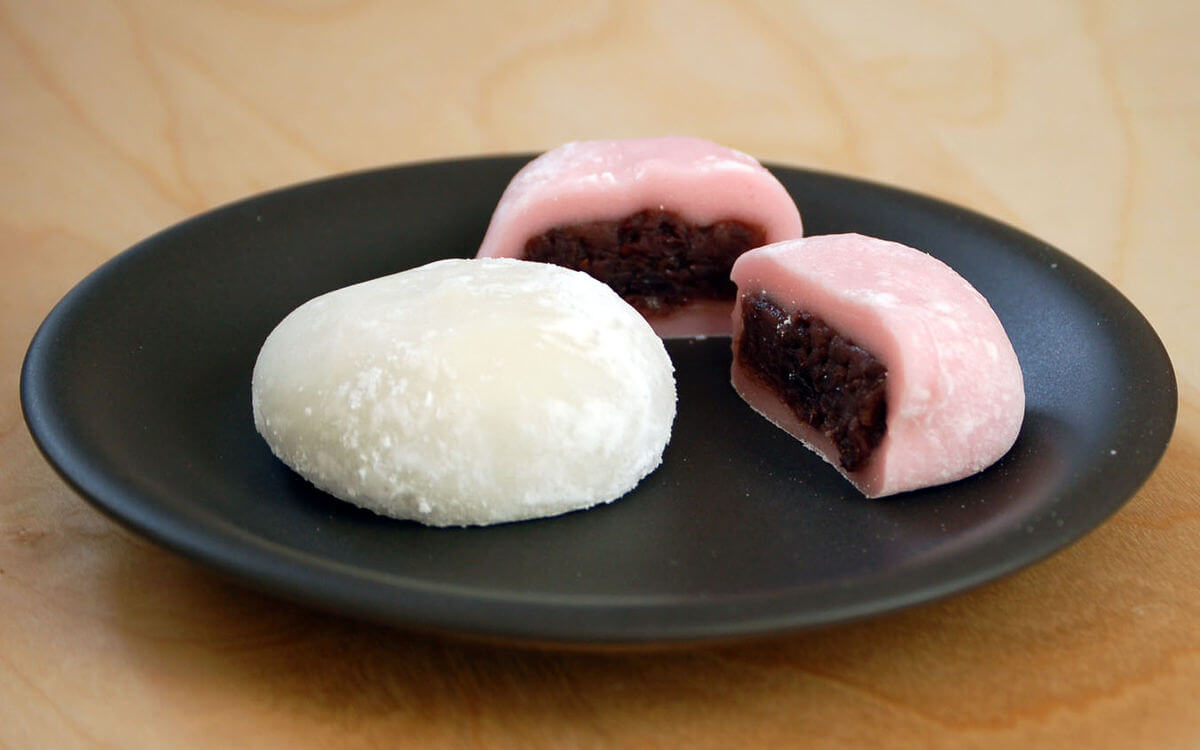
24. Japanese Cheesecake
Japanese cheesecake is soft, airy, and nothing like the dense, rich cheesecakes you find elsewhere. It’s fluffy, jiggly, and melts in your mouth.
The most famous place to try it? Pablo Cheesecake. When I first visited Tokyo, I went on a Pablo cheese hunt, and it was 100% worth it. The cheesecakes are slightly gooey in the center and come in different flavors like chocolate and matcha.
If you want something even lighter, try soufflé cheesecake in Japan. It’s delicate, just a little sweet, and perfect with a cup of tea.

25. Onigiri (おにぎり)
There’s something comforting about onigiri. Maybe it’s because it’s simple. Just a rice ball, wrapped in seaweed, filled with something delicious. But somehow, it always hits the spot.
You’ll find onigiri in every convenience store in Japan, ready to grab whenever you need a quick snack. The fillings range from classic salmon or tuna mayo to pickled plum or miso-seasoned kombu. Some are soft, some have a crispy seaweed wrap, and each one is a little surprise waiting to be unwrapped.
If you ever come across a specialty onigiri shop, stop and try one. Handmade onigiri is on another level. The rice is perfectly seasoned, the fillings are fresh, and for something so simple, it can feel incredibly special.

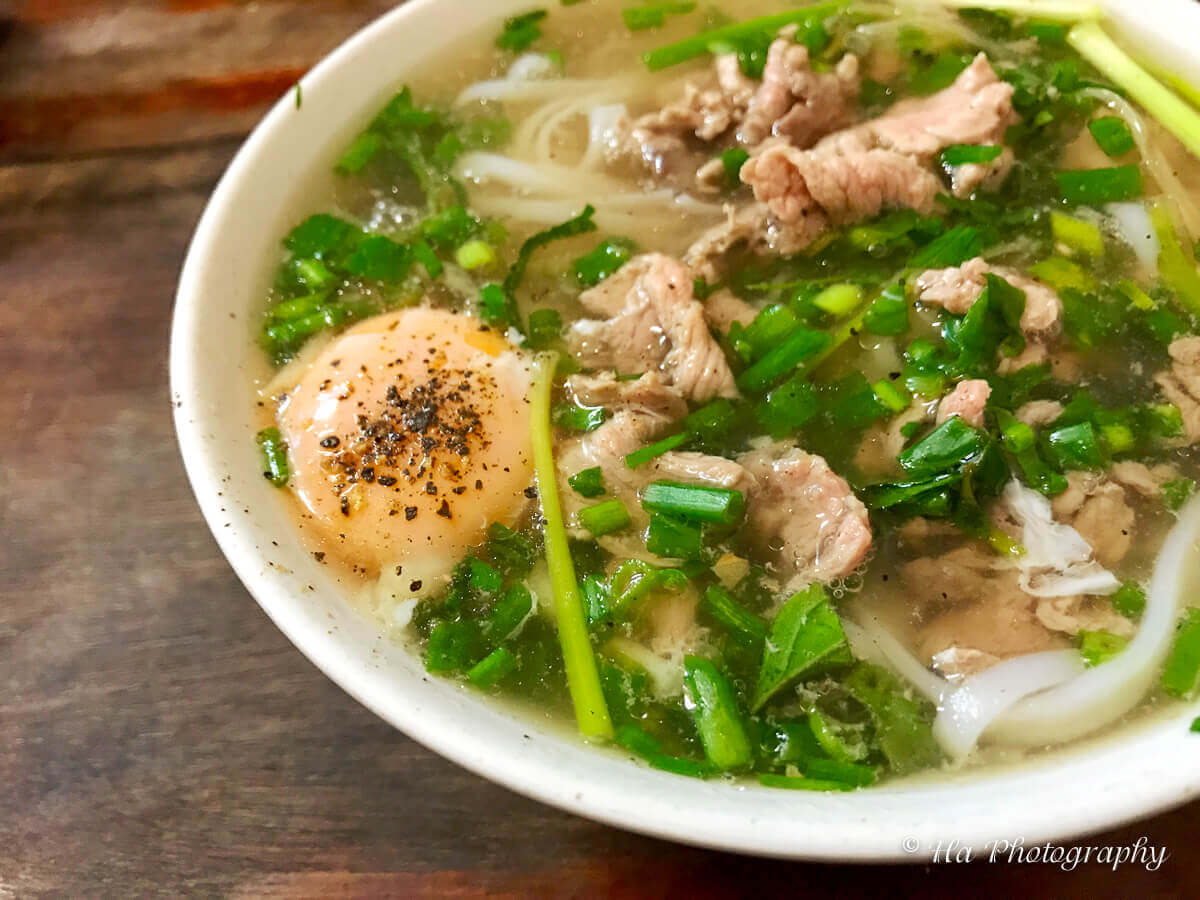


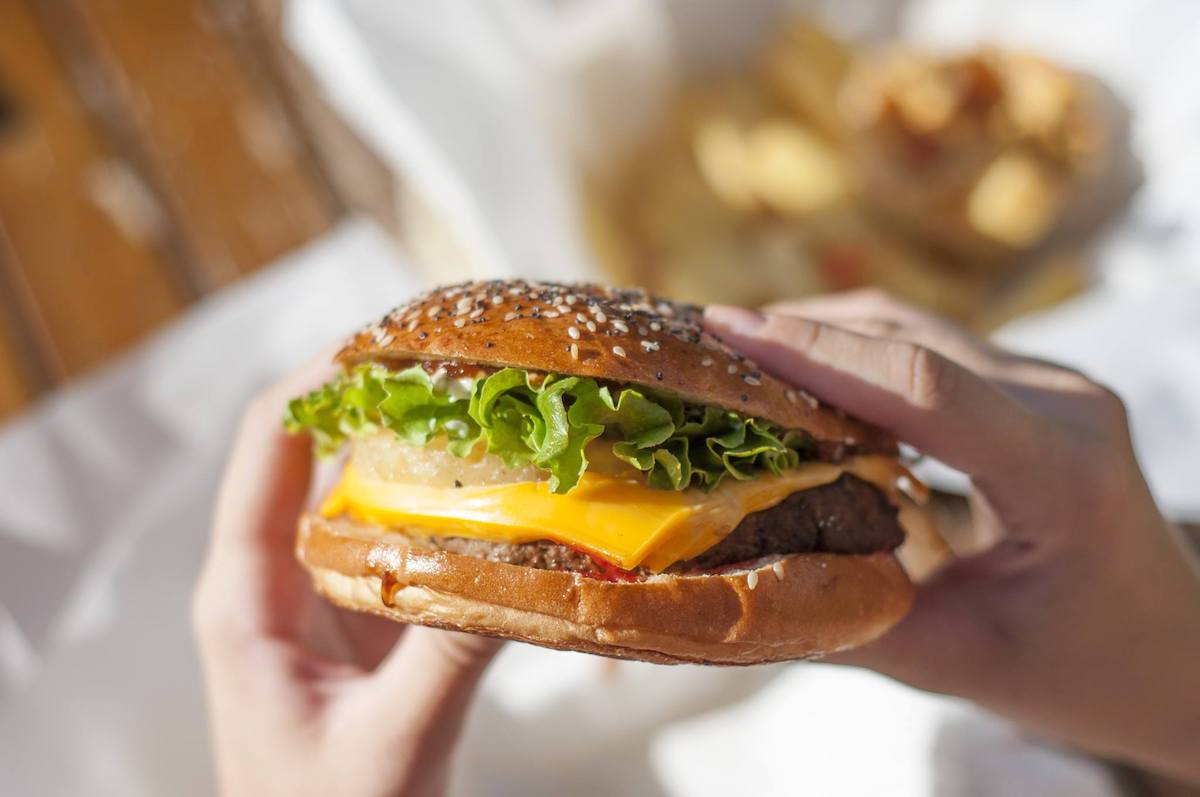
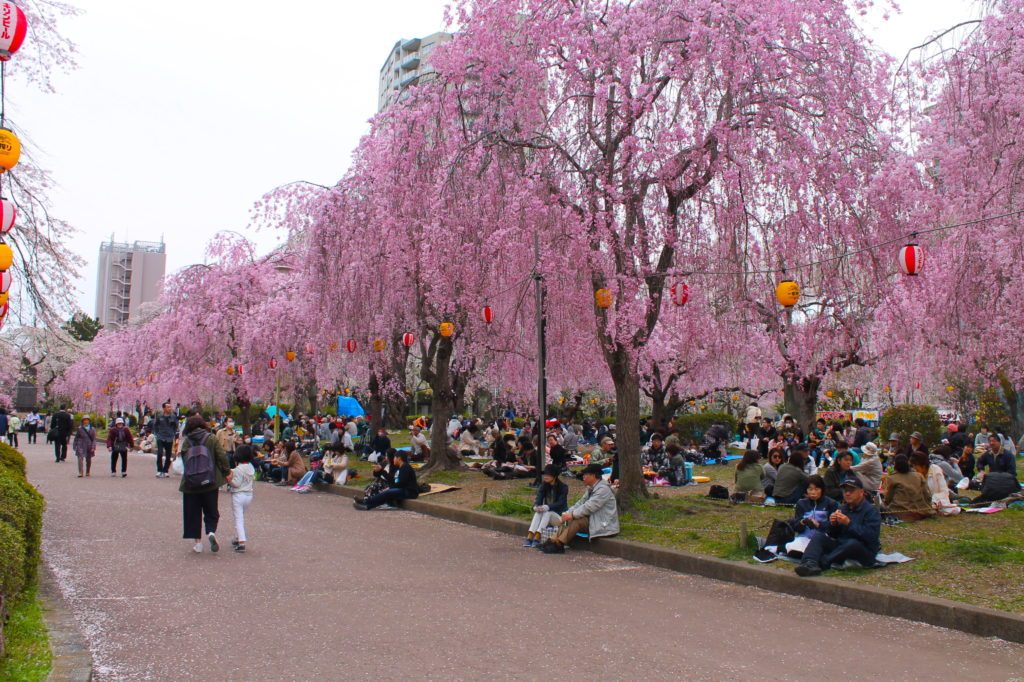
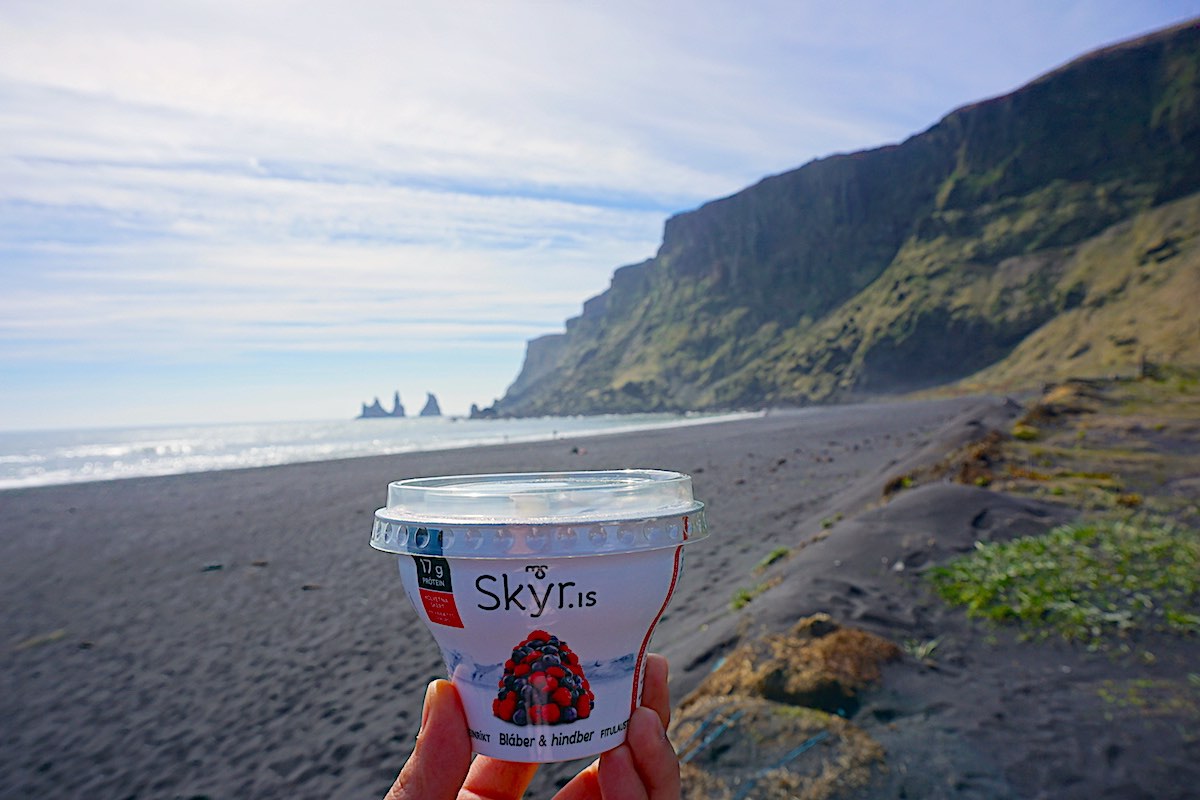
Being a vegetarian, Japan has always been a scary thought for me when it comes to food. LOL . Would love to know whether one can easily find vegetarian food in Japan.
There’s not many vegetarian choice in Japan, but you can try veggie tempura :)
We love Udon – can’t decide if we love the cold or in hot broth more, need to have some now to decide haha! Takoyaki is our other favorite as well. Tempura.. well who hates tempura really? :P
It’s so true! No one can hate tempura ;)! They have veggie ones and also meat related ones, so everyone can try it!
Yum! Japanese food is one of my fav. Actually been to Japan two weeks ago, and it was amazing. And had some ramen yesterday at a local restaurant. It was pretty good, but not the same of course. I tried most of these, but not everyone – so have to go back I guess!
I’m glad to hear that you had good time in Japan :)
I love Japanese foodd!!! In fact I love everything on this list – takoyaki is my favourite! :)
You should try to make Takoyaki ! It’s really fun to do with your friends/ family :)
Oh my gosh, I love Japanese food! This made my tummy rumble so much! I visited just over a year ago and can’t wait to go back again some day. The British imitation of sushi in particular in NOT the same!
I tried Japanese food in some countries in Europe, and they are not the same for sure. You should go back Japan for the food haha!
Wow, I love sweets and I had no idea that there is such thing as a Japanese Cheesecake! The description is so tasty that I cannot wait to try it. I am going immediately online to find a Japanese restaurant so that I can feel this taste myself!
You should try Japanese cheesecake! It’s so yummy and tastety :)
It took me awhile to get used to mochi, but now I adore it. Aw man now I’m craving it too! haha. Having lived in Japan before, this is really bringing back so many memories. Ah delicious nostalgia!
Mochi was quite strange at first I would say, but it is so yummy when you get used to it. I still live in Japan as an expat, and wow I love food here <3
Great guide. Japanese food in particular Sushi is one of my favorite things to eat! I haven’t heard of all the foods you have suggested so will have to try some next time I go to a Japanese restaurant or if I make it to Japan!
Thank you! I’m glad that you like it.
I’m going to japan for the first time at the end of this year and cannot wait to try as many of these as possible! They all sound delicious!
Hope you will have a great trip to Japan :)